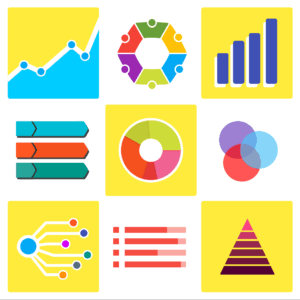A Proactive Data-Driven Approach
Innovation in today’s fast-paced, data rich environment needs real-time business intelligence. In this way, the innovation leadership and team can pivot and adapt to consumer preferences and market needs. Artificial intelligence developments have certainly made these initiatives a bit more streamlined as results, outcomes and goals can be determined faster.
Thinslices, in its blog, “Aligning Product Innovation with Business Objectives,” discusses how AI has enabled the drive to power more data into the business, and therefore, has ignited aligning innovation with business objectives. Otherwise, innovation without strategic alignment might just be a costly experiment that wastes time and budget, the company notes.
In addition, Thinslices further advises: “Aligning innovation with business strategy requires data-driven decision-making at every stage. AI-powered predictive analytics and real-time business intelligence tools are enabling executives to identify market shifts, track competitor movements, and assess product performance faster than ever. By embedding live market data, automated reporting, and AI-driven insights into product development, teams can ensure innovation efforts remain tightly aligned with corporate priorities—adjusting strategies proactively instead of reactively.”
A well-structured strategic innovation framework provides a clear path for aligning product innovation with business goals. According to Thinslices, this includes key elements that drive business and innovation directions such as:
- Defining corporate identity and strategic priorities.
- Encouraging experimentation while maintaining focus.
- Building an innovation portfolio that supports business objectives.
- Measuring the impact of innovation initiatives.
By ensuring product development is grounded in business strategy, says Thinslices, this framework helps teams balance creativity with execution—driving meaningful, scalable innovation.
Analytics Aligning with Innovation
During FEI 2025, Anu Sundaram, Vice President, Business Analytics at Rue Gilt Groupe, will present the session, “Aligning Innovation with Business Strategy Through Analytics.” Explore how to effectively align innovation initiatives with business strategy through the strategic use of analytics. The session will examine:
- Stage-Specific Analytics: Understanding the varying analytical needs at different stages of the innovation lifecycle, from ideation to implementation.
- Early Integration: Involving analytics teams from the outset to ensure proper resource allocation and data-driven decision-making throughout the innovation process.
- Sustainable Pace: Balancing expectations and timelines to prevent burnout and increase the likelihood of successful innovation outcomes.
- Data-Driven Insights: Leveraging data analysis to identify opportunities, test concepts, measure impact, and optimize innovation initiatives.
- Business Impact Focus: Moving beyond revenue generation to demonstrate the specific, measurable impact of innovation on key business objectives, such as profitability and customer satisfaction.
Attendees will gain practical guidance on using analytics to drive strategic innovation, optimize resource allocation, and achieve desired business outcomes.
Not Just Another Experiment
The emergence of AI has ignited growth in more data-intensive collaboration between corporate disciplines and teams. Certainly, an emphasis on data and analytics to align innovation goals and drive business strategy was always a key objective. Now, with new technologies, it calls for a more responsive, proactive approach that can speed new product development and other innovation strategies to market faster and with less trial and error.
As Thinslices notes, “Aligning product innovation with business objectives isn’t just about generating ideas—it’s about executing them efficiently at scale. With the right frameworks, automation strategies, and AI-driven insights, product teams can ensure innovation stays strategic, measurable, and impactful. By combining structured decision-making, execution efficiency, and real-time adaptability, enterprises can ensure that every product innovation effort moves the business forward—rather than becoming just another experiment.”
Video courtesy of Gartner
Contributor
-

Matthew Kramer is the Digital Editor for All Things Insights & All Things Innovation. He has over 20 years of experience working in publishing and media companies, on a variety of business-to-business publications, websites and trade shows.
View all posts





















































































































































































